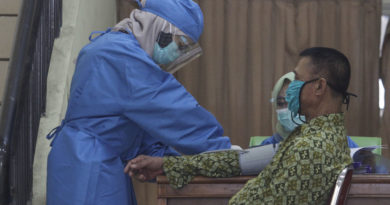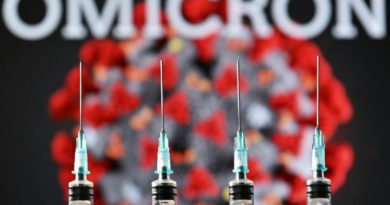Life & Style: What to know about bleeding after intercourse
| Dr. Tena Kovacevic — Photo courtesy of Family Medical Practice Hanoi |
.
.
Postcoital bleeding is a medical term that refers to spotting or bleeding unrelated to menstruation and that occurs during or after sexual intercourse.
It can be a sign of a serious underlying disease and is usually an alarming sign for the patients. However, in most cases the cause of postcoital bleeding is a nonmalignant (benign) condition. Up to 8 per cent of reproductive age women experience bleeding after intercourse and in more than half the bleeding stops on its own.
The most serious, but the least common cause of postcoital bleeding, is cervical cancer. In a community population, one Finnish study in the 1960s and 1970s calculated 1 in 220 women with postcoital bleeding had cervical cancer. Since that time, there has been a significant change in both the frequency of the symptoms and incidence of the disease.
.
.
ADS by Cloud 9:
.
– SPACE RESERVE FOR YOUR ADVERTISEMENT –
.
More recent studies estimate the risk of cervical cancer in women with postcoital bleeding to be between 1 in 44,000 women age 20 to 24 years and 1 in 2,400 in women age 45 to 54 years, which makes cervical cancer a rare cause of postcoital bleeding.
It is also important to point out that the risk of cervical cancer in women with postcoital bleeding depends on the number of women diagnosed with cervical cancer in a given population. In a population where the prevalence of cervical cancer is high and cervical cancer screening (Pap test) is not regularly performed, more likely it is that the cause of postcoital bleeding is cervical cancer.
The most common conditions that have been associated with postcoital bleeding are nonmalignant conditions i.e. conditions not linked to cancer. Those include cervical ectropion (also called cervical ectopy, erosion), cervical polyps, cervicitis (inflammation of the cervix) and genital prolapse.
.
ADS by Cloud 9:
.
– SPACE RESERVE FOR YOUR ADVERTISEMENT –
.
For one to understand more about cervical lesions, cervical anatomy and histology needs to be explained briefly. Cervix (Latin for neck) is part of the uterus. The vaginal portion of the cervix protrudes into the vagina and can be clearly seen during gynecological examination. Inside the cervix is a cervical canal that connects the uterine cavity with the vagina. The vaginal portion of the cervix is covered with smooth, pale pink squamous epithelium (lining), very similar to the lining of the vagina, whereas the cervical canal is lined by bright red glandular columnar epithelium that produces mucous.
When the mucous producing lining of the cervical canal ‘goes out’ and is exposed to the vagina it is called cervical ectropion (also called cervical ectopy or cervical erosion). It is a very common condition usually found in adolescents, in women who are pregnant or women on birth control pills.
.
ADS by Cloud 9:
.
– SPACE RESERVE FOR YOUR ADVERTISEMENT –
.
CERVICAL ECTROPION IS NOT LINKED TO CANCER and does not need to be treated except in rare occurrence of excessive discharge or spotting that is very bothersome to the woman.
In those rare cases that require treatment, medications like boric acid can be prescribed. More invasive treatment like electrocautery or cryotherapy can lead to cervical stenosis that can adversely affect future fertility, labor and delivery. Therefore, invasive ablative treatments should be the last choice of treatment for symptomatic cervical ectropion.
The second common cause for postcoital bleeding is cervical polyps.
.
ADS by Cloud 9:
.
– SPACE RESERVE FOR YOUR ADVERTISEMENT –
.
Cervical polyps commonly occur during reproductive years, especially after 40. It is still unknown why polyps appear. Chronic inflammation of the cervical canal may play a role, as do hormonal factors. Cervical polyps are seen during gynecologic examinations as tear-shaped red coloured structures typically very small, most often smaller than 3cm in diameter. Polyps should be removed if causing bleeding or excessive discharge, if they are very large or appear atypical. Most importantly, CERVICAL POLYPS ARE RARELY MALIGNANT. However, if polyps are removed, they should be submitted for histological study.
Cervicitis, inflammation of the cervix, can also be a cause of postcoital bleeding. However, it is more often associated with heavier, purulent discharge than with bleeding after and/or during intercourse. The most common causes of cervicitis are bacterial vaginosis and chlamydial infection. Therefore, if cervicitis is suspected, appropriate testing for sexually transmitted infections and bacterial vaginosis should be performed.
.
ADS by Cloud 9:
.
– SPACE RESERVE FOR YOUR ADVERTISEMENT –
.
In each of these conditions, bleeding can be reproduced during gynecological examination and each of these conditions can easily be recognised by an experienced gynecologist.
Once the correct diagnosis is made, appropriate treatment is easily advised.
Although it is understandable that postcoital bleeding brings panic and anxiety to the patient, one should know that it is far more likely that the cause of postcoital bleeding is benign and not linked to cancer. In addition, very often the symptoms resolve spontaneously. However, as one of the signs of cervical cancer is postcoital bleeding, it is advisable to visit a gynecologist to rule out the most serious diagnosis.
Importance of cervical cancer screening (Pap test) cannot be stressed enough. — Family Medical Practice
By Dr. Tena Kovacevic*
.
ADS by Cloud 9:
.
– SPACE RESERVE FOR YOUR ADVERTISEMENT –
.
* Dr. Tena is board certified in Obstetrics and Gynecology. She came to us after 6 years of practicing in Croatia and after additional training in London and New York. She started seeing patients at Family Medical Practice Hanoi from the beginning of 2018. She is eager to meet her new patients in Hà Nội, and we are thrilled to have her on board.
For more advice on any medical topics, visit Family Medical Practice Hanoi at: 298 I Kim Mã, Ba Đình. Tel: (024) 3843 0748. E: [email protected].
FMP’s downtown Hồ Chí Minh location is: Diamond Plaza, 34 Lê Duẩn, District 1; 95 Thảo Điền Street, District 2. Tel: (028) 38227848. E: [email protected]
FMP Đà Nẵng is located at 96-98 Nguyễn Văn Linh Street, Hải Châu District, Đà Nẵng. Tel: (0236) 3582 699. E: [email protected]
www.vietnammedicalpractice.com | www.care24h.com.vn

All photographs, news, editorials, opinions, information, data, others have been taken from the Internet ..aseanews.net | [email protected] | Fo r comments, Email to : Al Bulario | [email protected] | Contributor |









